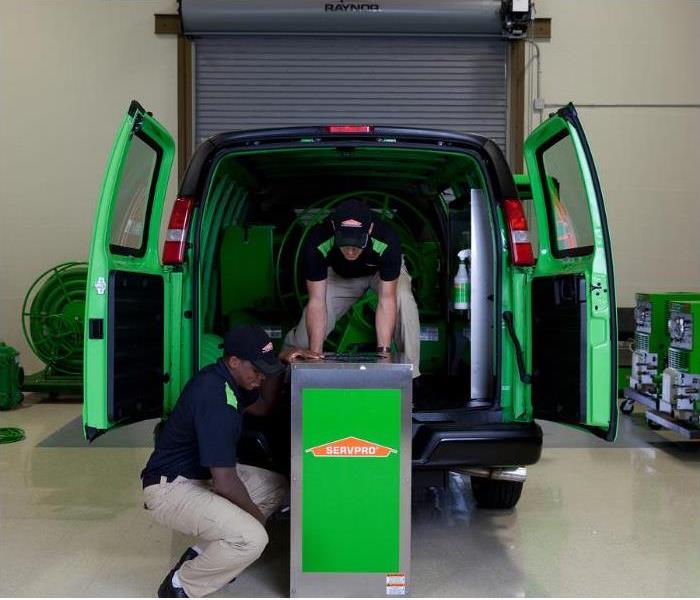Precautions Necessary in Seattle Property after Mold Damage
9/29/2022 (Permalink)
 You can depend on our professionals with state-of-the-art equipment to thoroughly remediate mold damage in your Seattle property.
You can depend on our professionals with state-of-the-art equipment to thoroughly remediate mold damage in your Seattle property.
SERVPRO Runs Mold Remediation in Seattle Homes Safely
Mold straddles different spectrums of property damage. It soils and consumes materials while simultaneously creating hazardous conditions at a property. Therefore, taking precautionary steps is as crucial as any other action in your Seattle property when resolving mold damage.
The best precaution step would be to keep your Seattle property mold damage free. However, if you can see signs of contamination, then it is too late for that. You should move forward and find a way to mitigate the problem while protecting your family members from any detrimental effects. Our SERVPRO Applied Microbial Remediation Technicians receive training focusing on advanced and straightforward ways to handle mold remediation safely.
Simple safety actions during remediation :
- Do not stir too much airflow
- Contain areas before demolition
- Do not introduce moisture unnecessarily
Precautions are necessary when cleaning, moving contents, or removing moldy materials. One comprehensive solution is setting up containment barriers separating different house sections, thus ensuring any disturbed debris stays within the soiled area. The best containment is made from 6-mil plastic sheets supported by PVC pipes or spring-loaded metal rods since it is easy to set up and forms airtight barriers. With the containment in place, work crews can disturb materials without fear of spreading debris. Our SERVPRO technicians wear personal protective equipment such as goggles, respirators, and rubber gloves to protect themselves from exposure. In case of severe contamination, a full bodysuit is necessary.
Managing a Mold Damaged Environment
Since containment is not practical in every mold damage case or all areas of a property, knowing how to manage the environment, in general, is ideal. Moisture and airflow are the main issues to control since cleaning and drying are the main activities required when restoring contaminated areas. Airflow can be affected by abrasive cleaning processes such as compressed air or drying wet areas using air movers. Our SERVPRO technicians look for alternatives that do not create problems. For instance, HEPA vacuuming surfaces to remove colony debris by drawing it in rather than spreading it. Maximizing water extraction and then using dehumidifiers can limit the need for air movers.
Other steps that limit the spread of mold debris:
- Sealing HVAC Vents before starting the remediation
- Bagging and sealing removed materials
- Establishing negative air pressure
Moisture influences mold development and spreading. Using significant water when cleaning areas soiled by mold is not ideal since it can precipitate re-infestation. Alternatively, considerable drying efforts are necessary. Cleaning the contaminated areas using alternative approaches can be a better approach. Our SERVPRO technicians use soda or dry ice blasting. The two methods use sodium bicarbonate and dry ice pellets, driven at high pressure against a surface where they disintegrate on impact, removing the residue accumulation on the surface. Blast cleaning does not involve any moisture, so it cannot fuel further contamination. Sodium bicarbonate has an added advantage since it creates a harsh environment for mold spores while also deodorizing. On the other hand, dry ice does not leave any residues.
SERVPRO of Seattle Northeast handles mold damage regularly while following IICRC standards to ensure safety for work crews and home occupants. Call us at (206) 362-9295. We’re Faster To Any Size Disaster.






 24/7 Emergency Service
24/7 Emergency Service